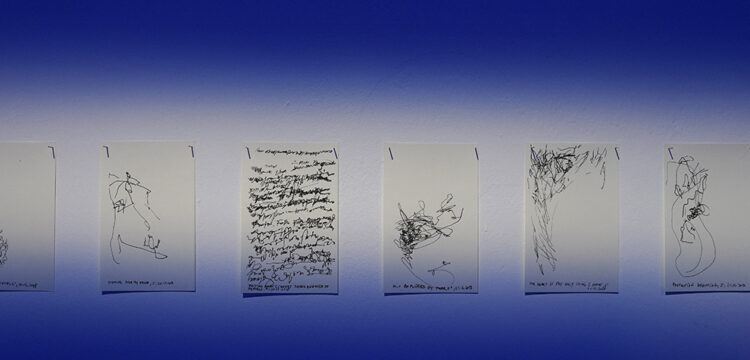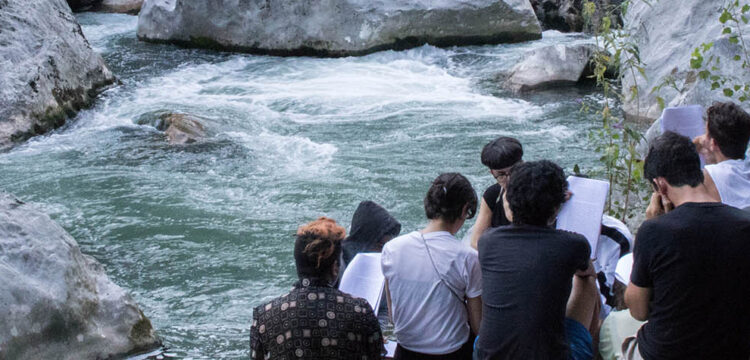Material Self
A collective performative exhibition
Within the context of the Live Works Summit 2024, Centrale Fies launches the second episode of a trilogy of performative exhibitions (2023- 2025), dedicated to the concepts expressed in the theoretical work of neo-materialist feminist thinker Stacy Alaimo. From July 18 to September 21, Centrale Fies presents Material Self, a collective performative exhibition featuring Caroline Achaintre, Chiara Bersani, Benni Bosetto, Rehema Chachage, Julien Creuzet, Sonia Kacem, Sandra Mujinga, curated by Simone Frangi and Barbara Boninsegna, with executive curatorship of Maria Chemello.
Following the first episode in 2023, which focused on the notion of the “naked word”, this year the idea of the “material self” will be investigated. This is a concept that Alaimo examined in her 2010 book Bodily Natures: Science, Environment, and the Material Self, framing the action and meaning of “material forces” and their interfaces with human bodies. The exhibition seeks to answer the same questions which Alaimo poses in her post-anthropocentric thinking, which is critical of the superb exceptionalism of humans: what does it mean to “be human” with bodies that are inextricably interconnected with the physical world? How does the human body react to powerful and pervasive material forces and register their increasingly damaging effects? Material Self suggests that the “new” relationship between bodies and nature has profoundly altered our sense of self, creating an unprecedented proximity of the human body to the environment and a renewed relational understanding of the concepts of “home”, “shelter” and “inhabiting the world”.
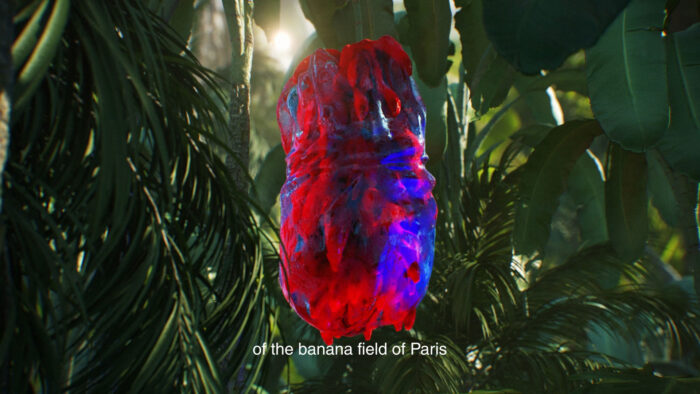
What does it truly mean to feel a sense of belonging in a place? What nurtures this innate connection, this spontaneous harmony between oneself and the environment, and what are the circumstances that give rise to this feeling of being at “home”?
In Nitakujengea Kinyumba, na Vikuta Vya Kupitia (A Home for You I Will Create, with Exit Pathways), these inquiries are at the forefront. Through her project, Rehema Chachage delves into the complexity and diversity of the phenomenon of rootedness by performing alongside narratives and memories inherited from her matrilineage—those of Nankondo, Bibi Mkunde, and Mama Demere. Central to the performance is the transient nature of this sensation and its inherently fragile political implications. The performance space serves as both a stage and a mental nexus: Chachage meticulously crafts an associative environment using a curated selection of natural materials, within which memories from stories, songs, rituals, and oral traditions are etched. Through her performance, Chachage actively engages with this environment, navigating the role of her body and its interactions with others in the quest for a sense of home. Yet, the fleeting nature of performance as a medium underscore the idea that any feeling of belonging is indefinite and susceptible to disruption at any moment.
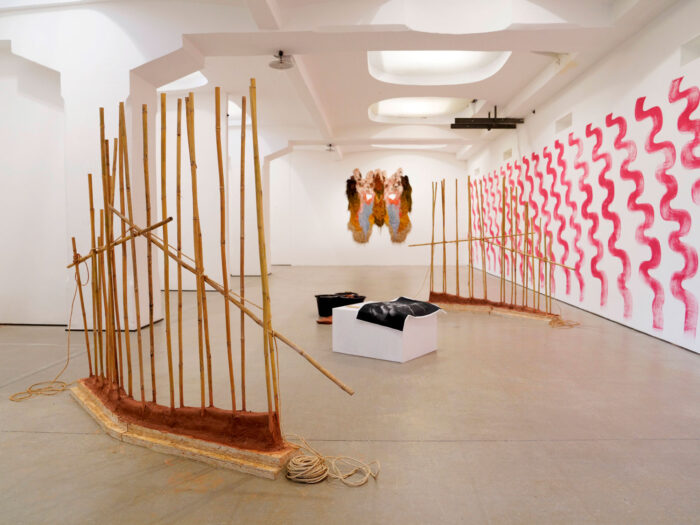
The expropriated home is also at the center of Julien Creuzet’s contribution, who is present in the exhibition with the video installation: mon corps carcasse / se casse, casse, casse, casse […]” . A masterful blend of images and movement, this video sets Forgia abuzz with a dynamic, hypnotic medley of Afro-pop rhythms. The video entitled Mon corps carcasse (…) is a collision of chopped and screwed sounds with overlays of archive images, 3D animated objects, and symbols. A loaded and insightful vocabulary emerges. It is a dense narrative that springs directly from a critical reflection on the soil pollution caused by the mass use of the pesticide chlordecone. Extremely toxic and carcinogenic, it was widely used from 1972 to 1993 in Martinique and Guadeloupe by major French and American industrial companies to grow bananas, while it was strictly forbidden in mainland France during that same period. The scandal resulted in an environmental disaster that contaminated rivers, plants, animals, and land while also causing severe health problems for local populations.The video superimposes the French flag, banana trees pulsating rhythmically in a tropical forest, waves of gold coins, blood cells, organs and pills, and pixelated bodies dancing as seen through a blood-red filter. The images alternate between sequences with a video- game aesthetic and video clips from the 1990s, their succession defying any linear narrative classification. It is a work that is as poetic as it is factual, revealing an inseparable link between the colonial poisoning of both bodies and territories.
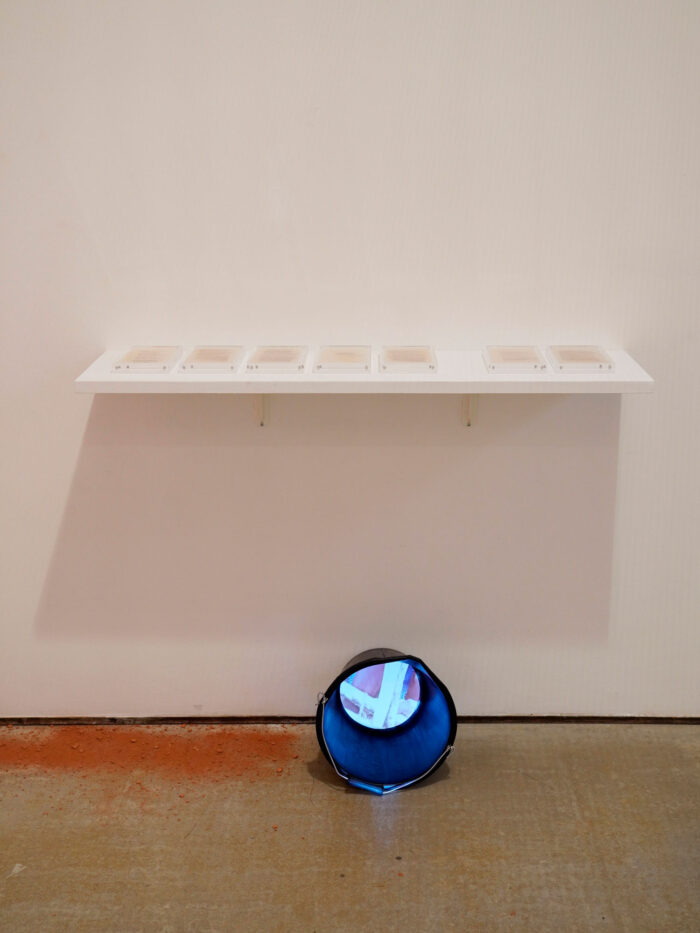
In Sonia Kacem’s latest artistic explorations Vague diagonale GD (RAL 3027), the creative focus is on ornament as a relational dimension between the self and the environment. A defining element of her recent journey is the integration of articulate calligraphic gestures, which, inspiring her with their rhythmic beauty, allow her to infuse her works with a sense of fluidity and movement. The genesis of the forms of these works can be traced back to her diverse experiences in places such as Tunis, Geneva, Amsterdam, Brussels and Cairo. Each location contributes to the evolution of a specific gestural language, drawing from sketches and doodles made in these varied contexts. Moving between abstraction and ornament through the medium of lithography, her works become more than just creations: they transform into a visual and tactile language, inviting viewers to explore the intricate dialogue between form and gesture, tradition and innovation. The delicate balance between abstraction and ornament has become a distinctive aspect of her work, which constantly plays on the edge of spontaneity and repetition. Walking this subtle and risky line, a single pattern emerges from the visual core that is inherently never the same, avoiding exact replication, embracing the beauty of imperfection as an integral part of the creative process.
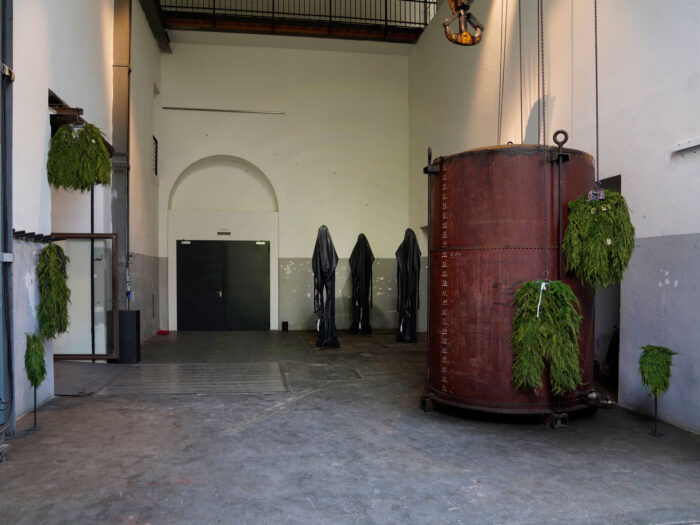
Two human figures covered in botanical elements (leaves, flowers and branches) move through the space sharing gestures of care and affection. Benni Bosetto’s Babau & Brouny are masks merging into one another and focusing their attention on a gaze that stretches beyond the body, melting it into the surrounding environment. Through mimesis and a process akin to animistic eco-feminism, Bosetto portrays an act of love between hybrid and monstrous figures, drawing from the iconography of ancient pagan and carnivalesque folklore traditions. “Babau” comes from European fairy tale tradition, inspired by the mythological figure of the bogeyman, the ogre, the imaginary monster with indefinite characteristics. The plants selected by the artists are the same ones she saw from the window of her childhood bedroom, which in the darkness of the night transformed into stunning monstrous figures in her eyes. A structural, reflexive and unconscious animism that becomes a tool to offer a different vision of nature, towards a unique and interspecies approach to love.
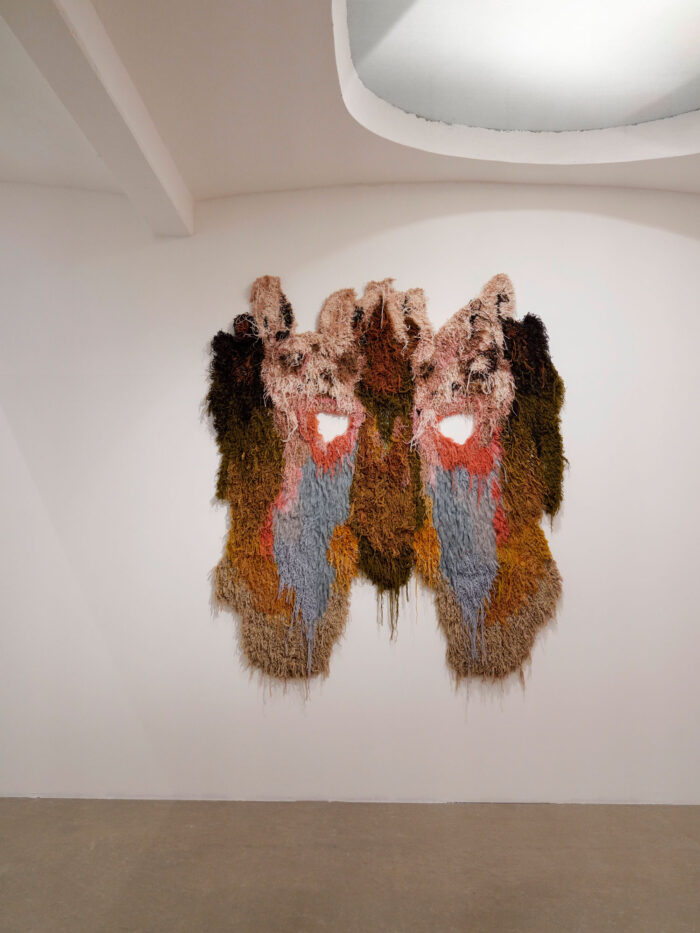
Caroline Achaintre’s W.O.O.O.O.F. is a large wall tapestry, whose appearance and meaning elude categorisation and definition. Caroline Achaintre works with wool with an extremely intuitive and spontaneous approach, leading the viewer into an archaic yet modernist aesthetic dimension. The characters created by the artist are hybrid creatures that feed on multiple iconographic references inspired by carnival and science fiction. In W.O.O.O.O.F. a large mask resembling a wolf captures the viewer’s gaze, positioning itself as a powerful tool of projection for the individual who observes. The French artist’s work blends anthropological references, abstraction and figurativeness to reflect on the moment when the material is suspended between a form and its disappearance.
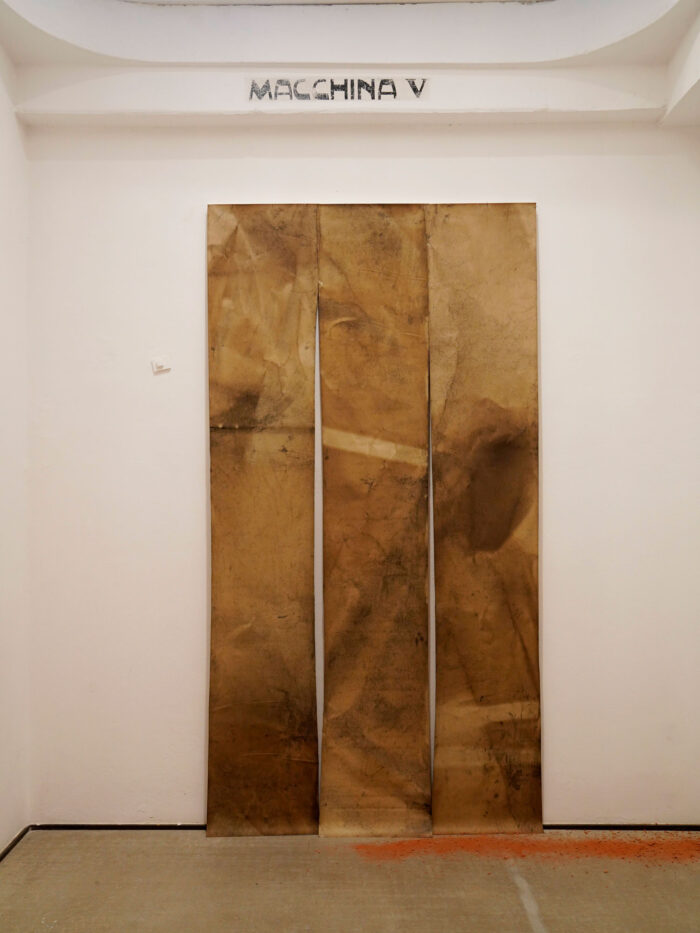
Also Sandra Mujinga’s sculptures are ghostly and intimidating presences, seemingly guarding the space. 3 Touch-Face are covered by prolonged hoodies, an item of clothing used to elude police racial profiling, but also a symbol of protest. Their physiologies and the title are inspired by elephants’ habit of touching their faces with their trunks, a motion that serves no immediate purpose other than providing the animal with a pleasant sensation. With her sculptures and installations, Mujinga proposes invisibility as a survival strategy and a conceptual tool to critically observe our political reality: a space to question the concepts of identity and self-representation, and to escape physical and digital surveillance. Combining techniques of animal camouflage and urban resistance, Mujinga reflects on darkness as a space for collective action.
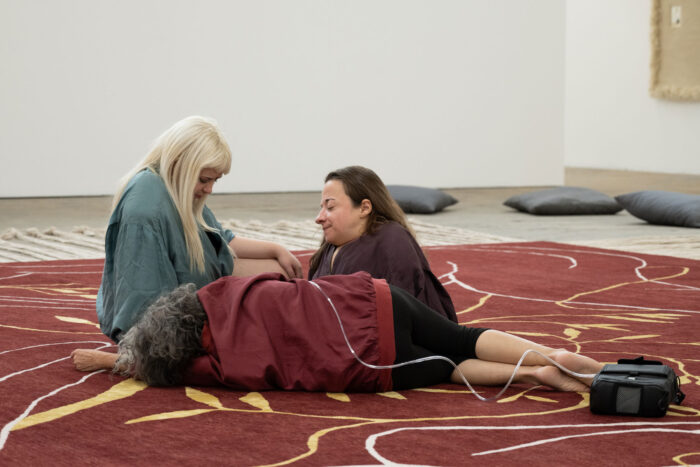
The question of vulnerability understood as a subjective identitarian dimension and as a shared bodily condition is also at the core of Chiara Bersani’s Deserters. Bersani is an Italian performer and author active in the performing arts, research theater and contemporary dance. Her research as a performer and author is based on the concept of the political body and the creation of practices aimed at training its presence and action. Deserters is an installation conceived as a multimedia and performative device composed of different parts in relation to each other. The performance staged on the large carpet designed by the artist cannot exist without the carpet itself and the accompanying sound environment. In addition to these elements are a series of drawings, depicting non-conforming bodies, embedded within woven surfaces hanging on the walls. As part of Material Self, Deserters’ installation elements are displayed “at rest,” waiting for or after their activation. The work’s title refers to the words of Virginia Woolf in her essay On Being Ill (1926). With illness, the essay reads, “we stop being soldiers in the army of the upright; we become deserters.” The artist’s invitation is to abandon the upright position, proper to a self-styled condition of health and conformity, and adopt a different communal perspective.


